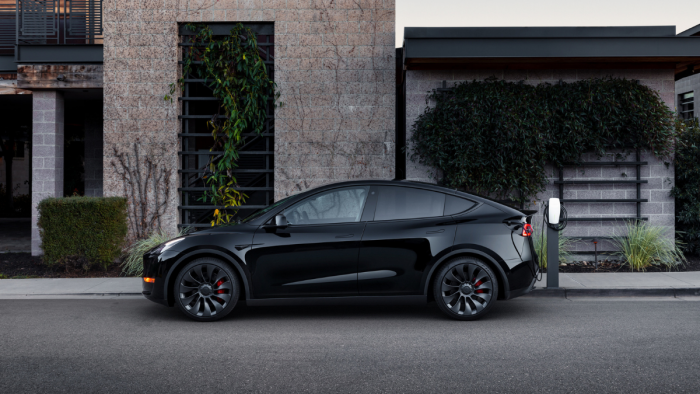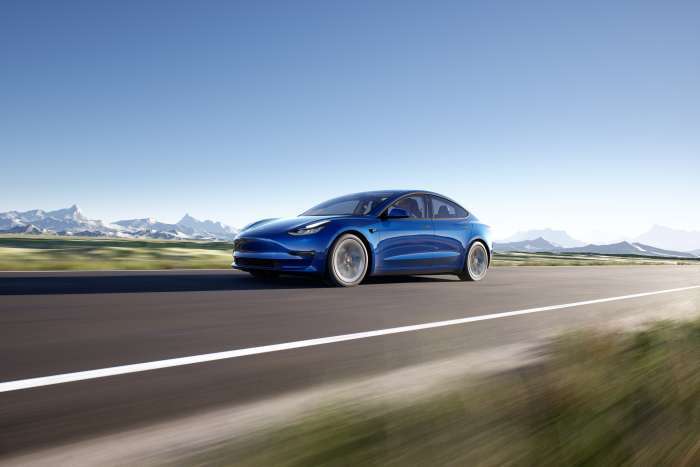With the market eating out of their hand, Tesla electrics are leading the mobility shift. The Model 3 and Model Y are among the best-selling cars worldwide; sales keep growing and that has been a great support to start a new phase in the life of Tesla. Elon Musk has begun to execute the third part of his Master Plan: a phase that is marked by widening the gap that separates Tesla from its closest pursuers. The Tesla Model 2 will indeed have a fundamental role in that strategy, and as of today we already have official information about its battery capabilities.
No one can deny that in technical areas Tesla is at the forefront of electric mobility; very few companies are able to match their skills and thus establish themselves as industry leaders. The Austin company knows well that its rivals are actually also growing up and acting very quickly, but as a matter of fact Tesla is not resting on its laurels either. The evolution of its entire EV gamut continues to demonstrate its good work: for this year 2023 they have already announced important renovations of the Tesla Model 3 (“Highland project”) and Tesla Model Y (“Juniper project”). In addition, the long awaited Tesla Cybertruck will be officially presented.

However, all the current figures will be basically eclipsed with the arrival of a model with an affordable price and long range. With a price-product ratio that is difficult to match, many take it for granted that it will be called Tesla Model 2, although there is still no official confirmation about it. The name will hardly be relevant because what is truly important is the final tag price and the technical characteristics. Regarding the first, Musk himself has already been in charge of recognizing an estimated price of $25,000 on many different occasions. A cost that as of today can only be associated with electric vehicles of small size and/or range.
A completely new platform is being developed capable of producing at a speed never seen before: the recently announced Nuevo León plant in Mexico will be the first to mass-manufacture Tesla's compact car. According to the company's own estimates, four million units a year are expected to be manufactured there, twice as many as the company's current leaders, Model Y and Model 3. To reduce the cost per unit, Tesla will focus on two basic aspects in its mechanics: it will reduce the use of rare earths with the latest generation permanent magnet synchronous motors, and power them with a completely new lithium iron phosphate (LFP) battery whose capacity has just been confirmed.

Tesla currently uses LFP batteries in the standard range versions of the Model 3 and Model Y that are made in China. They offer several advantages such as lower cost, due to the absence of cobalt in their chemical composition and their excellent durability, in exchange for a lower energy density. That's why Tesla is going to rely on them for the mobility of its compact car. The company has confirmed that its capacity will be 53 kWh which, although unknown if it is a gross or net figure, allows for the first - approximate - range estimates to be calculated.
Keep in mind that the Model 2 will be the smallest model in the house with an approximate size of 4.45 meters. Its weight will be low and its efficiency will be high thanks to good aerodynamics and the good work of the Austin engineers. The Model 2 has to be affordable and that's why the battery has a smaller capacity than its older brothers. With a 53 kWh battery, it can easily exceed 250 miles (400 km) of range, although this data is far from officially confirmed, as there is still no official release date. The developers are working on the first test units, although recently several highly camouflaged test models have been seen on the streets.

In conclusion, the Tesla Model 2 is shaping up to become a game-changer in the electric vehicle market. With its powerful LFP battery, competitive pricing, and long range, this model promises to bring affordable and efficient electric mobility to the masses. As Tesla continues to lead the charge in the EV industry, legacy car manufacturers are joining the race to produce affordable and sustainable vehicles. The Model 2 will undoubtedly mark a significant milestone in Tesla's Master Plan and the global transition toward cleaner transportation. With no official release date yet, anticipation is high for the arrival of this exciting model that could revolutionize the electric vehicle market.
All images courtesy of Tesla Inc.
Nico Caballero is the VP of Finance of Cogency Power, specializing in solar energy. He also holds a Diploma in Electric Cars from Delft University of Technology in the Netherlands, and enjoys doing research about Tesla and EV batteries. He can be reached at @NicoTorqueNews on Twitter. Nico covers Tesla and electric vehicle latest happenings at Torque News.













Comments
Kinda fake news. LFP
Permalink
Kinda fake news. LFP batteries are the least powerful batteries for EVs. But this is a Tesla propaganda outlet.
First , click bait article
Permalink
First , click bait article/title. Second thus seems like article written by a Tesla intern or cultish fan.
First , click bait article
Permalink
First , click bait article/title. Second thus seems like article written by a Tesla intern or cultish fan.
And no LFP batteries aren’t that powerful. But functional as a cheap and short range battery hence why it’s being used especially in standard range model 3